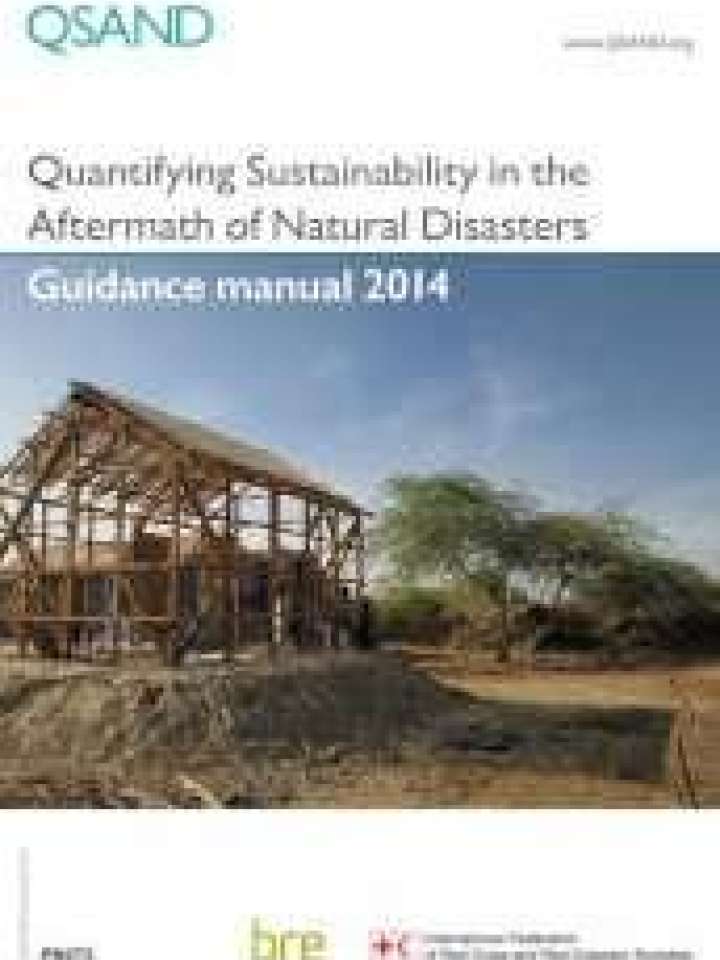Quantifying sustainability in the aftermath of natural disasters (QSAND)
This document for the QSAND tool describes sustainability performance criteria against which recovery and reconstruction projects can be self-assessed and scored so as to inform decisions made in the aftermath of a disaster. QSAND was developed by BRE Global (the developers of BREEAM), on behalf of the IFRC.
The tool draws on the standards developed by BREEAM, the world leading sustainability certification scheme for buildings, infrastructure and master planning. The tool was developed to support the drive in the humanitarian sector to consider and benchmark sustainable approaches to shelter and settlement operations after disasters.
QSAND takes a wide variety of factors, which impact the disaster recovery process, into account and promotes a holistic sustainability approach to address the context. Where practical, early decisions should positively influence the sustainability of the long-term reconstruction of the disaster hit area. Users may include:
- District / Province / Field level (e.g. field project managers / practitioners / regulatory officials). Those directly involved in the development, implementation and oversight of activities, using QSAND to inform the programme design and regularly monitoring compliance against the criteria.
- National / Regional / Headquarter level (e.g. desk officer / technical advisors / programme managers / national or provincial government officials). Those who are primarily desk based and not involved in day to day implementation, using QSAND to track overall progress against the key sustainability criteria identified.
- Global / International Stakeholder / Donor level (e.g. international organisations / donors and finance institutions / policy analysts). Those involved in overseeing or advising on the overall response and longer-term development needs, using QSAND to track the trends in sustainable recovery and reconstruction.
Explore further
